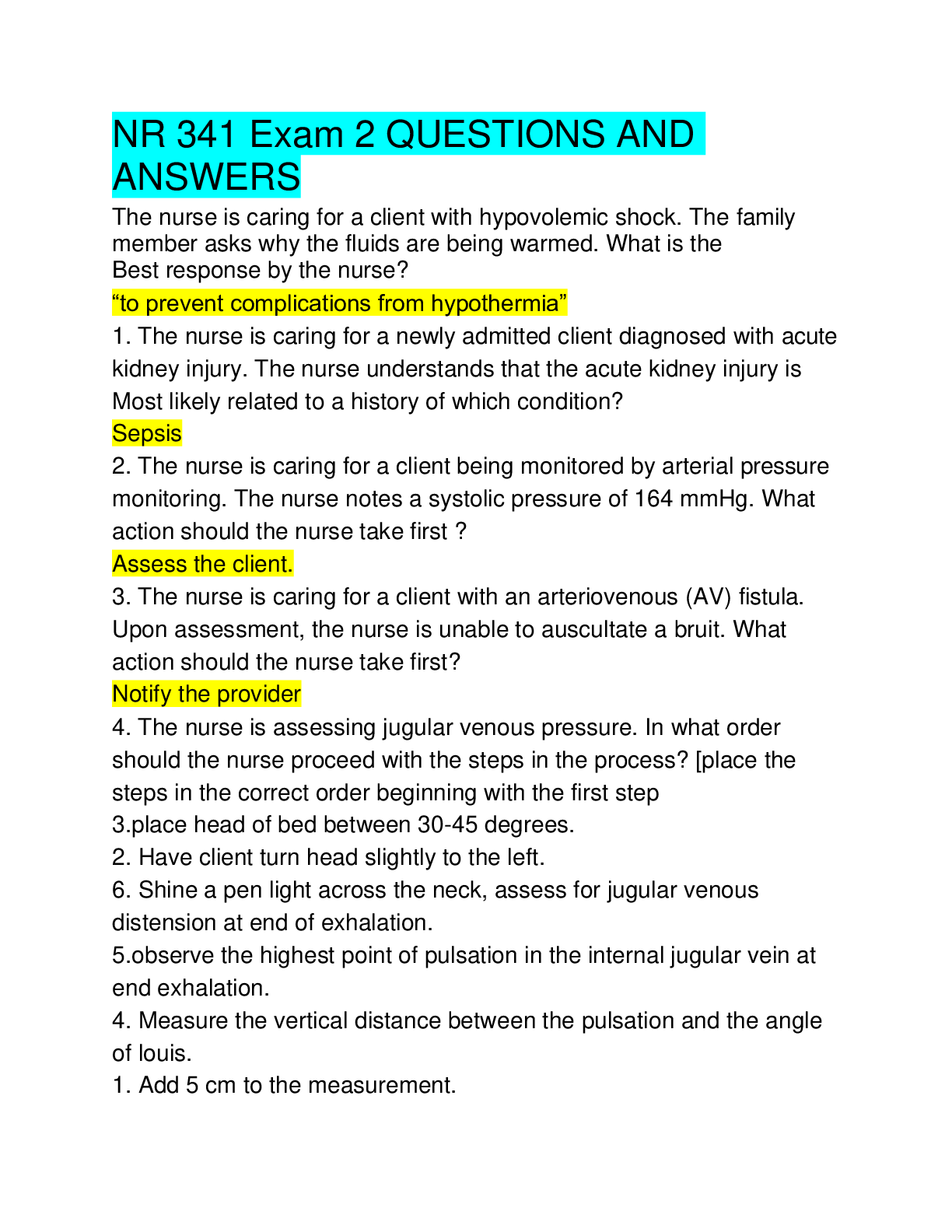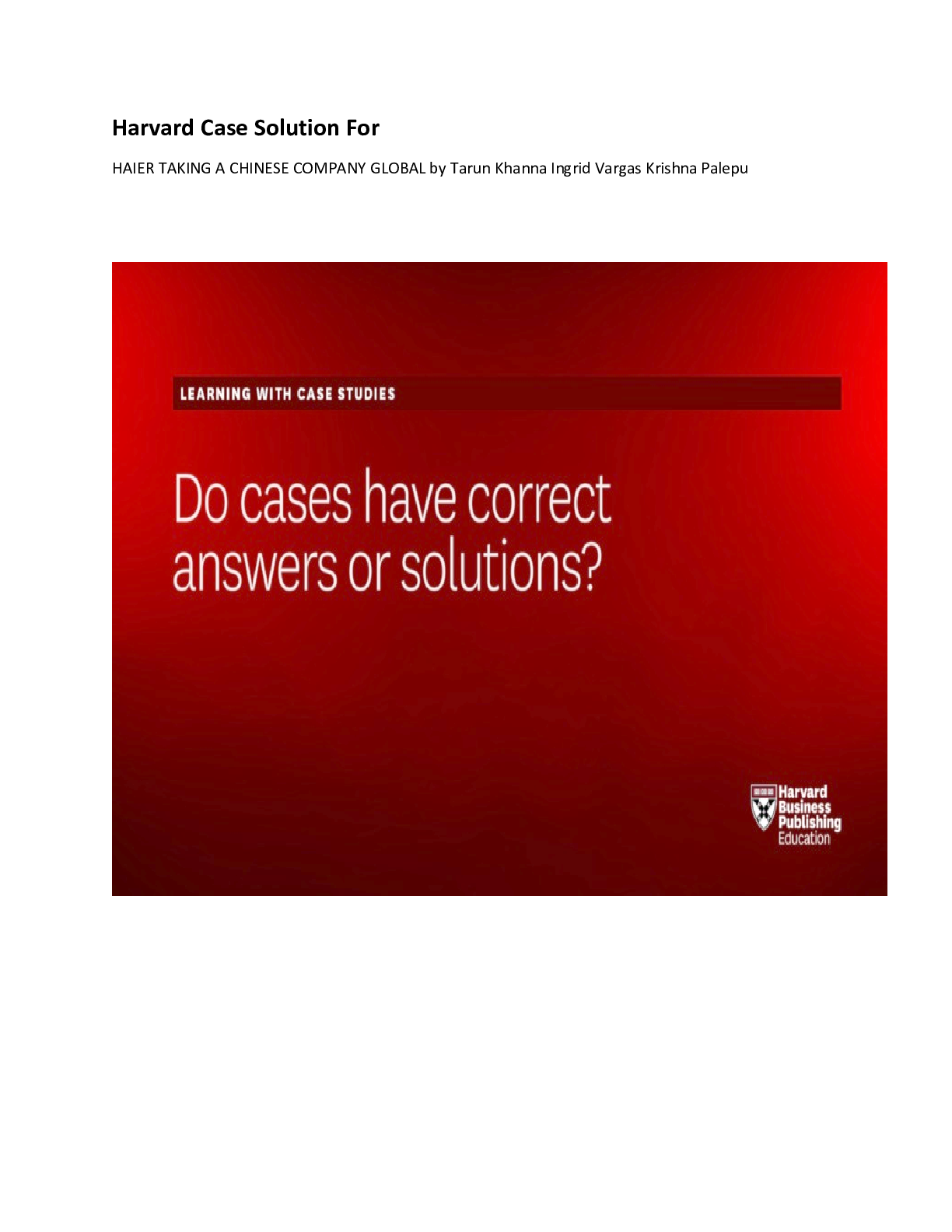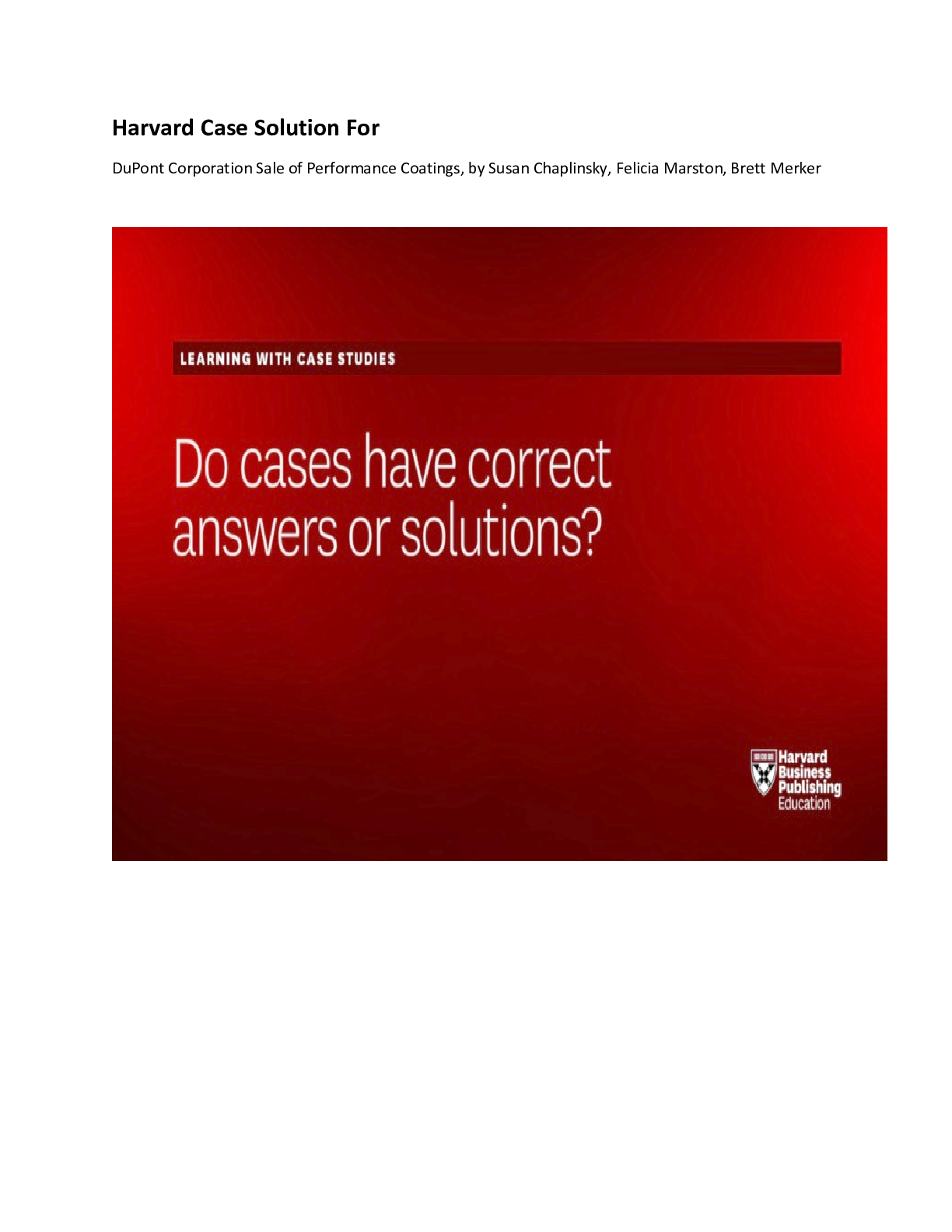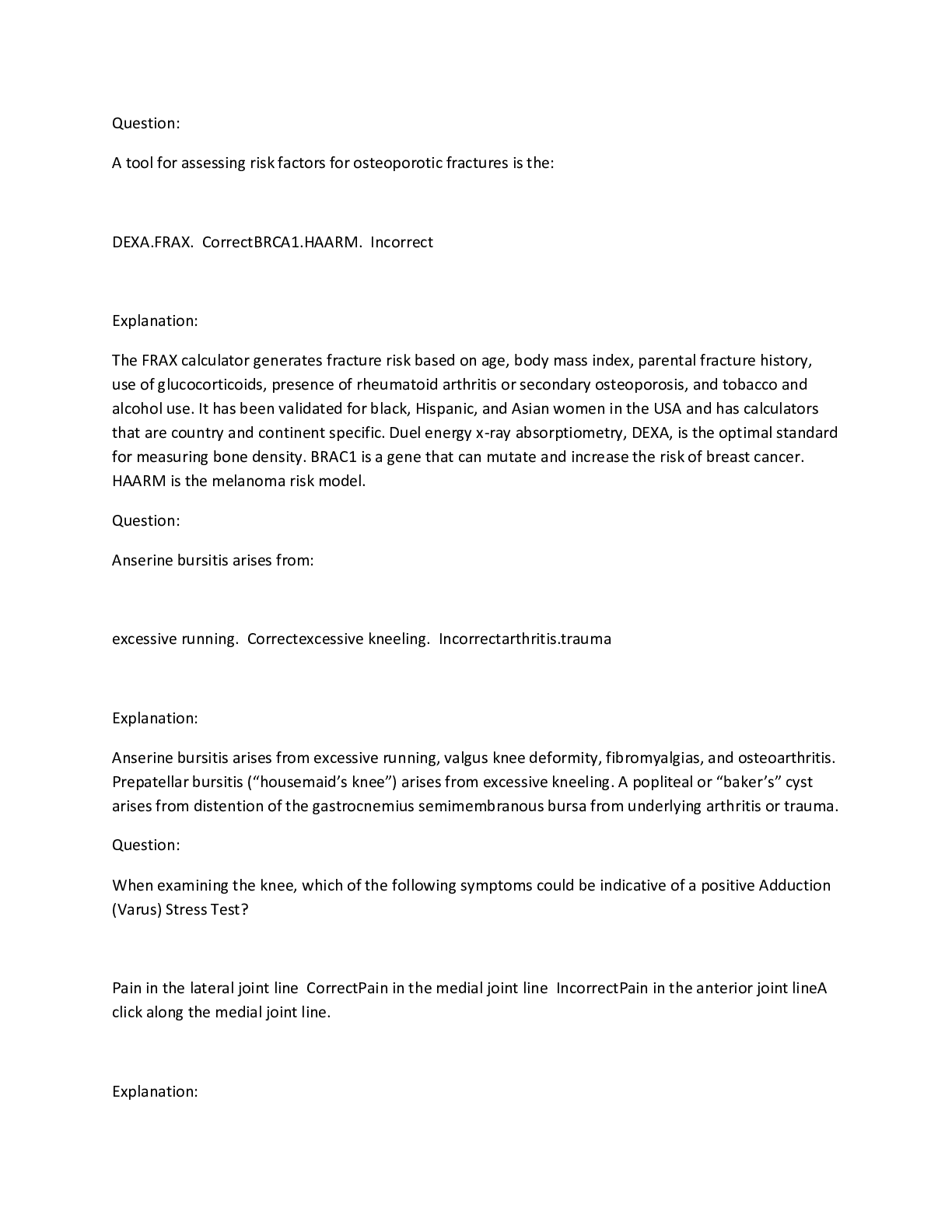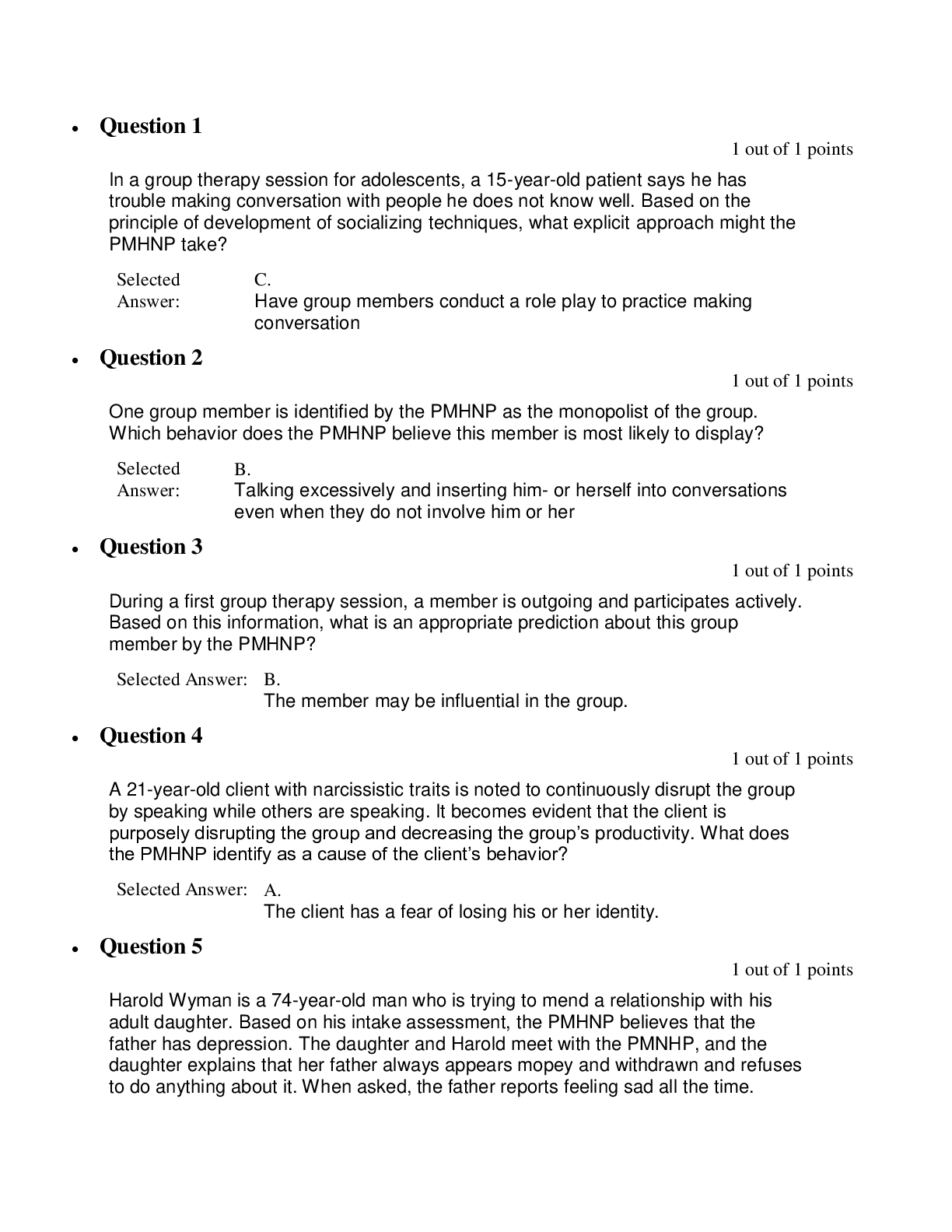Management > EXAM > MGMT 3850 CHAPTER 3 HOMEWORK QUESTION AND ANSWERS | LATEST SOLUTION (All)
MGMT 3850 CHAPTER 3 HOMEWORK QUESTION AND ANSWERS | LATEST SOLUTION
Document Content and Description Below
MGMT 3850 CHAPTER 3 HOMEWORK QUESTION AND ANSWERS Essentials of Entrepreneurship & Small Business Mgmt., 7e (Scarborough) Chapter 3 Designing a Competitive Business Model and Building a Solid Stra... tegic Plan 1) Which of the following is not one of the three components of intellectual capital? A) Human B) Structural C) Competitor D) Customer 2) ________ involves developing a game plan to guide a company as it strives to accomplish its mission, goals, and objectives to keep it on its desired course. A) Competitive advantage B) Mission C) Strategic management D) Market segmentation 3) The aggregation of factors that sets a company apart from its competitors and gives it a unique position in the market, superior to its competition, is its: A) mission statement. B) competitive advantage. C) competitive profile. D) strategic plan. 4) Which of the following was not identified as a way for the typical small business to establish a competitive advantage? A) Lowering prices B) Providing higher quality goods or services C) Improving customer service D) Doing whatever the company does for its customers better than its competitors 5) ________ are a unique set of capabilities that a company develops in key operational areas-such as service, innovation, and others-that allow it to potentially vault past its competitors. A) Core competencies B) Opportunities C) Key success factors D) Mission statements 6) The relationship between core competencies and competitive advantage is best described by which statement? A) Strengthening a company's competitive advantage strengthens its core competencies. B) A company's core competencies become the nucleus of its competitive advantage. C) As a company's core competencies become stronger, its competitive advantage becomes weaker. D) There is no relationship between core competencies and competitive advantage. 7) The key to entrepreneurial success over time is to build a ________ competitive advantage. A) defensible B) sustainable C) coherent D) random 8) A strategic plan serves as a blueprint to help a company to: A) match their company's strengths and weaknesses to the environment's opportunities and threats. B) accomplish its mission, goals, and objectives. C) identify a company's competitive advantage and set it apart from its competition with a unique position in the market. D) All of the above 9) Which of the following is NOT a characteristic of the strategic management procedure for a small company? A) It should use a relatively short planning horizon-two years or less, typically. B) It should begin with an extensive objective-setting session. C) It should encourage the participation of employees and even outsiders to improve the reliability and creativity of the resulting plan. D) It should allow for flexibility and not be overly structured. 10) A clearly defined vision helps a company in which of the following ways? A) Provides direction B) Determines decisions C) Motivates people D) All of the above 11) A small company's mission statement: A) establishes its purpose in writing. B) gives the business and everyone in it a sense of direction. C) defines what the company is, why it exists, and its reason for being. D) All of the above 12) When developing a company's mission statement, an entrepreneur should remember to: A) write the statement alone without anyone else's interference. B) omit statements about her values because they may turn some stakeholders off. C) keep it short and simple. D) All of the above 13) Strengths and weaknesses are ________ to the organization. A) internal factors B) external factors C) internal and/or external factors D) factors not belonging 14) ________ are positive internal factors that contribute toward accomplishing the company's mission, goals, and objectives, while ________ are negative internal factors that inhibit the accomplishment of a firm's mission, goals, and objectives. A) Strengths; weaknesses B) Weaknesses; strengths C) Opportunities; threats D) Threats; opportunities 15) Kevin Abt noticed that people were cooking meals in their homes less often but wanted to avoid the hassle of going out to eat. They wanted to "eat in" without cooking. Abt launched a company, Takeout Taxi, that delivers restaurant-prepared food to his customers' homes and businesses. Takeout Taxi is the result of a(n): A) strength. B) weakness. C) opportunity. D) threat. 16) Maria Sanchez is the owner of the Main Street Café and a new restaurant opens a few blocks away. From Maria's perspective, this new restaurant constitutes a(n): A) strength. B) weakness. C) threat. D) opportunity. [Show More]
Last updated: 2 years ago
Preview 1 out of 30 pages

Buy this document to get the full access instantly
Instant Download Access after purchase
Buy NowInstant download
We Accept:

Reviews( 0 )
$12.00
Can't find what you want? Try our AI powered Search
Document information
Connected school, study & course
About the document
Uploaded On
Feb 17, 2021
Number of pages
30
Written in
Additional information
This document has been written for:
Uploaded
Feb 17, 2021
Downloads
0
Views
67


